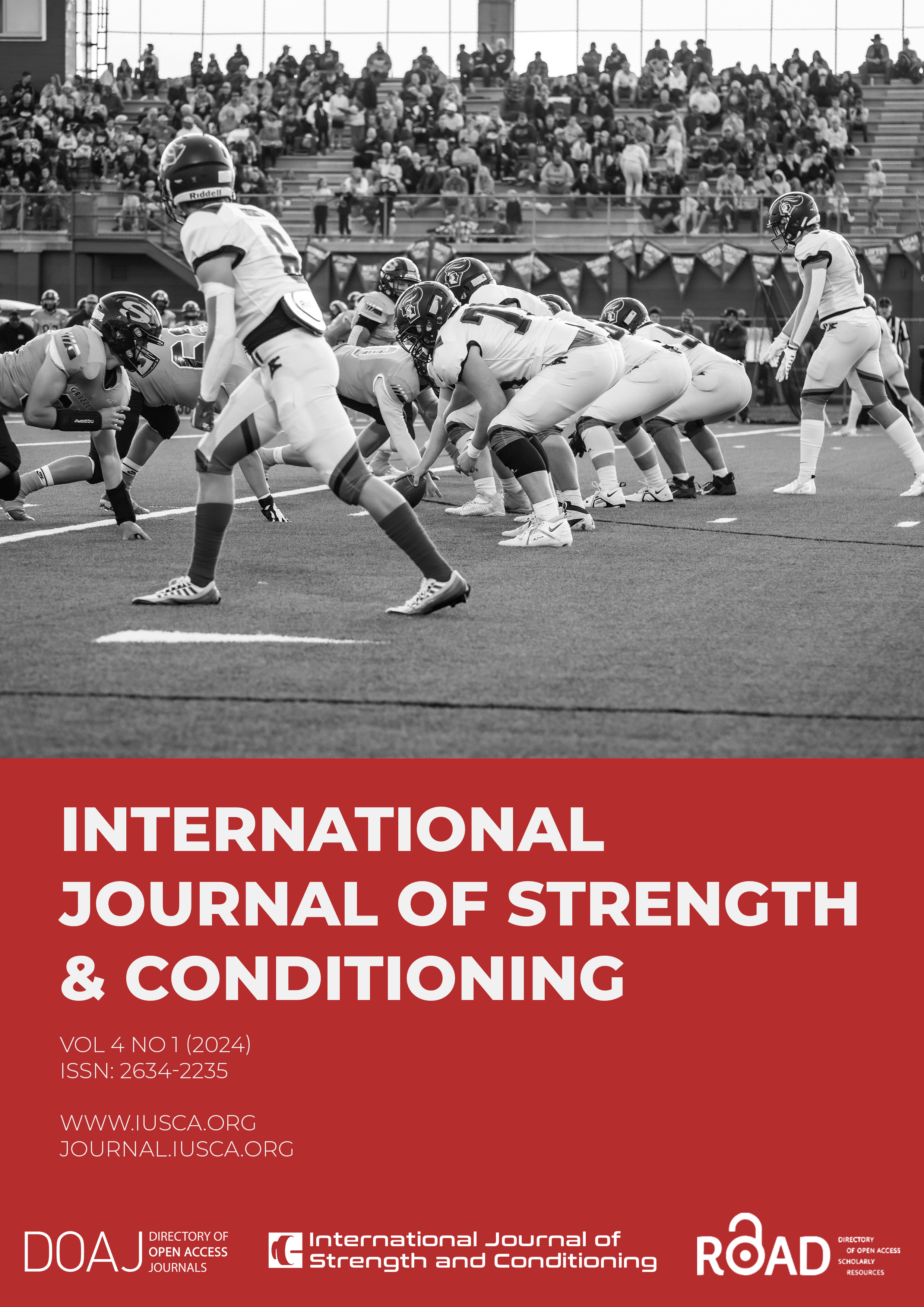The Effect of A Flywheel Hip Extension Vs A Traditional Hip Extension Exercise on Hamstring Strength
DOI:
https://doi.org/10.47206/ijsc.v4i1.272Keywords:
Flywheel inertia training, Eccentric hamstring strength, Hip extension exercise, Inertia loadingAbstract
The main aim of this present study was to compare the effect of a flywheel hip extension exercise versus a traditional gravity-dependent exercise on hamstring strength. Twenty U-20 male soccer players volunteered to participate in the study. None had experience with flywheel inertia training, but all had a minimum of 12 months traditional resistance training experience. The participants were randomly assigned to two groups: the flywheel Romanian deadlift and traditional Romanian deadlift groups. Resistance training was performed twice a week for six weeks. Both groups performed four sets of six working repetitions, with the flywheel group performing two extra submaximal pre-repetitions at a low intensity to initiate the rotational force of the flywheel. A significant main effect of time was found for both eccentric strength (p = 0.006) and 3RM (p < 0.001) tests. There was a significant time-by-group interaction for 3RM (p = 0.02) but not for eccentric strength (p = 0.18). Post hoc analyses showed a significant increase in eccentric hamstring strength at the end of the intervention compared to baseline in the flywheel group (13% change, 37 N, p = 0.03, g = 0.51) but not in the traditional group (5% change,14 N, p = 0.282, g = 0.18). Both groups showed significant increases in 3RM Romanian deadlift (flywheel group: 18% change,19 kg, p = < .001, g = 1.07; traditional group: 28 % change, 26 kg, p = < .001, g = 0.99). This study highlights the beneficial use of flywheel training for optimising hamstring strength adaptation. Although both groups showed similar improvements in the 3RM Romanian deadlift, the flywheel group showed superior eccentric strength improvements.
Metrics
Downloads
Published
Issue
Section
License
Copyright (c) 2024 Joey O Brien, Declan Browne, Des Earls, Clare Lodge

This work is licensed under a Creative Commons Attribution 4.0 International License.
Authors retain copyright of their work, granting IJSC a license to publish and distribute. All articles are distributed under the Creative Commons Attribution 4.0 License. We clearly state any fees associated with submissions or access for readers. For copyright or licensing queries, stakeholders can reach out to journal@iusca.org.



